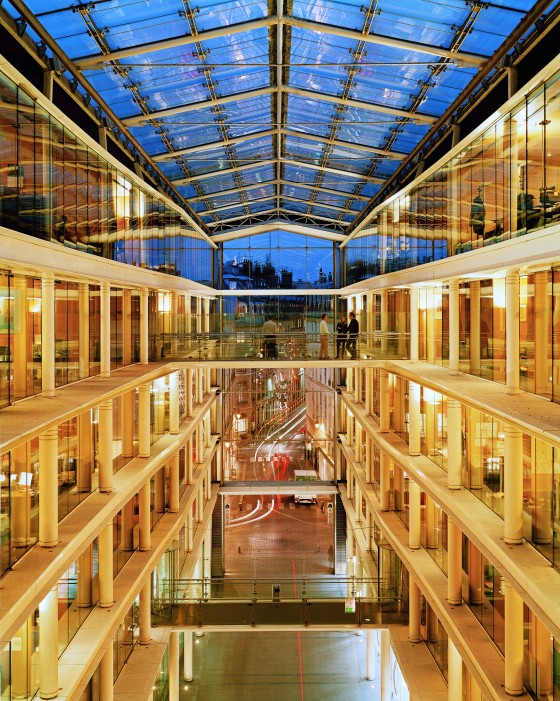Marché Saint-Honoré building meets the challenge of history

Marché Saint-Honoré building meets the challenge of history
Reconciling modern technology with the cultural legacy of an area steeped in history: such was the challenge set for the designers of the Marché Saint-Honoré building, which now hosts the BNP Paribas Group’s Corporate and Institutional Banking division.
Jacobin convent
In 1611, Louis XIII conferred a plot of land situated close to the Saint-Honoré hill on the outskirts of Paris on the Dominican order then domiciled in the rue Saint-Jacques, who were known as ‘Jacobins’. They founded a new convent out there which was officially opened by the regent Marie de’ Medici in 1613. From October 1789 to November 1794, during the French Revolution, the convent was occupied by a group of elected representatives and politicians who had formed the habit of meeting together since the Estates-General (a tiered national assembly comprising representatives of the three ‘Estates’ – i.e. the nobility, the clergy and the common people) had been re-called by the king. This group became known as the ‘Jacobin Club’. The Jacobins made an indelible mark on the events of the French Revolution, being especially associated with the Reign of Terror. The fall of Robespierre on the Revolutionary Calendar’s 9 Thermidor Year II (27 July 1794), was followed by the demise of the Jacobins and the destruction of their base at the convent.
Covered market
A covered market was built on the empty space left after the destruction of the convent. Little by little a cluster of houses grew up around the four market halls built of wood and stone. By 1863, the market’s wooden roof was regarded as inadequate so the architect Jules de Mérindol, who worked with Eugène Viollet-le-Duc, was commissioned to build a new structure of cast iron and glass, similar to that of the Carreau du Temple market. However, in the 1900s, the rise of large food stores and the increasing practice of selling fruit and vegetables from barrows in residential areas brought about a decline in the Parisian markets.
Ricardo Bofill’s glass temple
In the early 1990s, the local authorities decided to renovate the square and commissioned the Catalan architect Ricardo Bofill to lead the project. Banque Paribas took advantage of the renovations to get involved in the plans with a view to rationalising its premises, which were at the time scattered around the neighbourhood of the rue d’Antin. In February 1997, 700 Bank staff moved into the new building. This glass temple, which reflects the houses around the square, comprises two symmetrical wings, one on either side of a central street – the Passage des Jacobins. The building thus pays tribute to the great tradition of Paris’s covered streets, symbolising the ways of the past but firmly focused on the future.

Partager cette page






